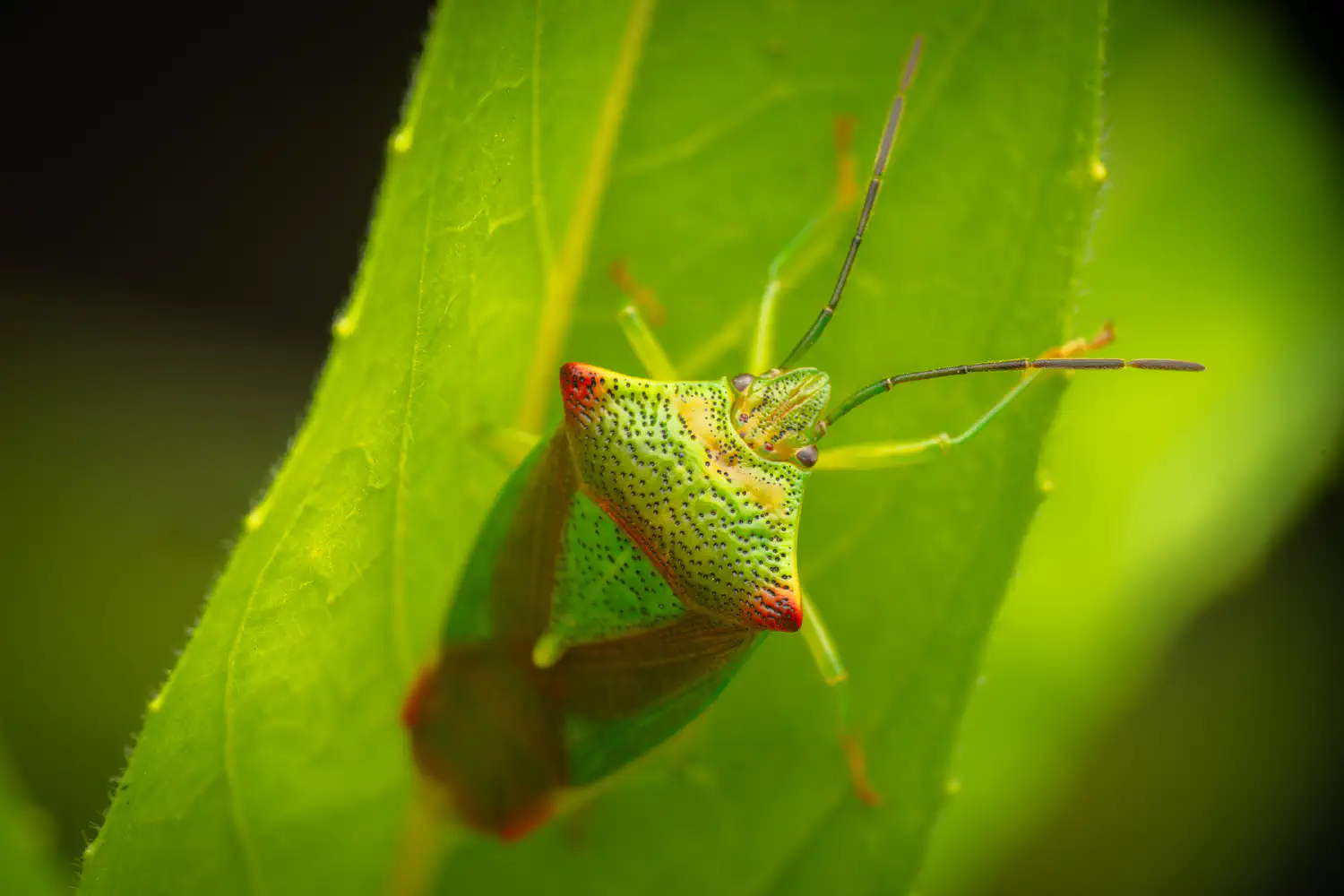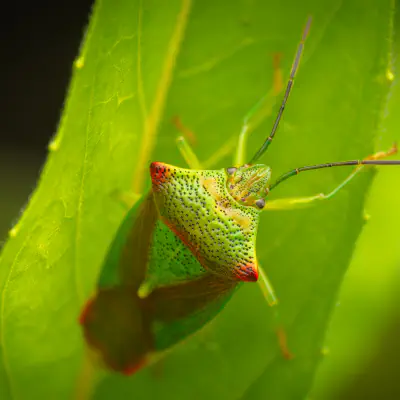Shield Bugs Lat. “Acanthosomatidae“
Acanthosomatidae is a family of Hemiptera, commonly named “shield bugs,” for which Kumar in his World revision recognizes 47 genera; now this number is 54 genera, with about 200 species, and is one of the least diversified families within Pentatomoidea. In 2014 a new genus was described upgrading the number of valid genera to 55.
Hierarchy
Description
Acanthosomatidae have heads that are keeled laterally and possess a pair of five-segmented antennae. The mesosternum has a strongly projecting keel. The tarsi of the legs are bisegmented. The second visible abdominal sternite has an elongate spine that projects forwards. The spiracles of the second abdominal segment are concealed by the metapleura. Abdominal sternite III has paired trichobothria. In males, sternite VIII is exposed and there is a specialised genital capsule. In females, one or two pairs of Pendergrast’s organs are present in the abdomen (sometimes absent, e.g. Elasmucha) and sternite VII has an emarginate posterior margin. In general appearance, Acanthosomatidae are similar to Pentatomidae. Various sources distinguish them based on the number of tarsal segments being two in acanthosomatids and three in pentatomids. However, some pentatomids have bisegmented tarsi as well.
Ecology
Acanthosomatidae are mostly herbivores on trees and shrubs. Host plants include Ficus, Hakea, Carex, Juncus, Cladium and Dactylis. There are also records of predation (including cannibalism) and scavenging on carrion.
Maternal care
Many species have females which take care of their offspring, guarding the eggs and nymphs. In these species, the Pendergrast’s organs are absent or reduced and non-functional. Other species have a more limited form of care: females smear their eggs with secretions from the Pendergrast’s organs (which may repel predators and parasitoids), then abandon the eggs. Egg smearing is the ancestral behaviour.
Genera
Examples of genera and species:
Gallery
Ancestry Graph
Further Information
„Shield Bugs“ on wikipedia.org
„Shield Bugs“ on iNaturalist.org
Copyright

This article uses material from the Wikipedia article Acanthosomatidae the free encyclopedia Wikipedia which is released under Creative Commons Attribution-ShareAlike 4.0 International License). On Wikipedia a list of authors is available.

Little beings in print
Order our calendars and books today!
Compiled with love. Printed sustainably. Experience our little beings even more vividly in print. All our publications are available for a small donation.


